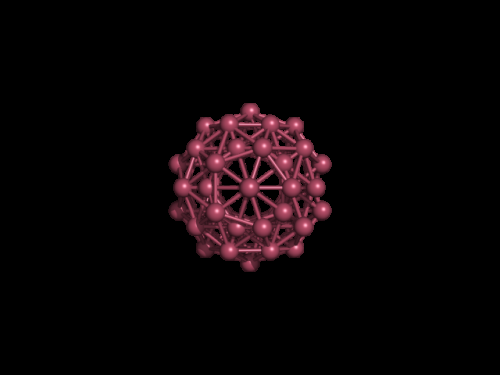Platonic solids generate their 4-dimensional analogues

Alicia Boole Stott, the third daughter of mathematician George Boole, is probably best known for establishing the term "polytope" for a convex solid in four dimensions. Alicia was also a long time collaborator of HSM Coxeter, one of the greatest geometers of the 20th Century.
Platonic solids are regular bodies in three dimensions, such as the cube and icosahedron, and have been known for millennia. They feature prominently in the natural world wherever geometry and symmetry are important, for instance in lattices and quasi-crystals, as well as fullerenes and viruses (see the recent paper by Pierre-Philippe Dechant from Durham University and Reidun Twarock's group in York [Dechant et al. (2014). Acta Cryst. A70, 162-167; DOI: 10.1107/S2053273313034220].
Platonic solids have counterparts in four dimensions, and the Swiss mathematician Ludwig Schlaefli and Alicia Boole Stott showed that there are six of them, five of which have very strange symmetries. Stott had a unique intuition into the geometry of four dimensions, which she visualised via three-dimensional cross-sections.
A paper by Dechant published in Acta Crystallographica Section A: Foundations and Advances [Dechant (2013). Acta Cryst. A69, 592-602; DOI: 10.1107/S0108767313021442] shows how regular convex 4-polytopes, the analogues of the Platonic solids in four dimensions, can be constructed from three-dimensional considerations concerning the Platonic solids alone. The rotations of the Platonic solids can be interpreted naturally as four-dimensional objects, known as spinors.
These in turn generate symmetry (Coxeter) groups in four dimensions, and yield the analogues of the Platonic solids in four dimensions. In particular, this spinorial construction works for any three-dimensional symmetry (Coxeter) group, such that these cases explain all "exceptional objects" in four dimensions, i.e. those four-dimensional phenomena that do not have counterparts in arbitrary higher dimensions. This also has connections to other "exceptional phenomena" via Arnold's trinities and the McKay correspondence. This spinorial understanding of four-dimensional geometry explains for the first time the strange symmetries that these four dimensional objects have.
This connection between the geometry of four dimension and that of three dimensions via rotations/spinors has not been noticed for centuries despite many of the great mathematicians working on Platonic solids and their symmetries, and is very different from Alicia Boole Stott's way of visualizing three-dimensional sections. It sheds new light on both sides, from real three-dimensional systems with polyhedral symmetries such as (quasi) crystals, viruses and fullerenes to four-dimensional geometries arising for instance in Grand Unified Theories and string and M-theory.
More information:
1. DOI: 10.1107/S2053273313034220
2. DOI: 10.1107/S0108767313021442
Provided by International Union of Crystallography




















